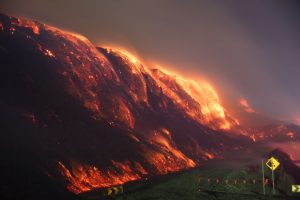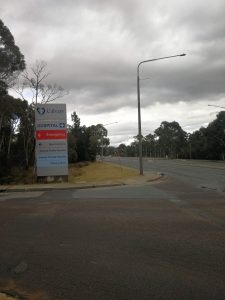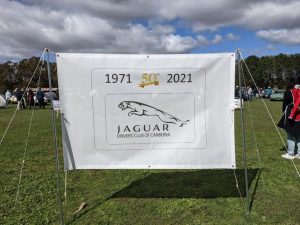A preventable disaster breeds unlikely activists

It’s been more than six years since the Hazelwood Coal Mine burned for 45 days, blanketing the Latrobe Valley in ash. Though the fire is long extinguished, the community has continued to grapple with its impacts.
The Fire
Gippsland’s Latrobe Valley produces 85% of Victoria’s electricity. The region’s power stations are so ingrained in the community’s collective consciousness that businesses display signs thanking the workers of Hazelwood. They were given out by the Council when the station closed in 2017 and remain in some shopfronts today, next to empty arcades and shuttered stores.
Despite providing an essential element of Victoria’s economy, the Valley has struggled since the 1990s. Privatisation of the State Electricity Commission forced residents to flee to Melbourne, and the population has yet to reach the levels it was at in the 90s. In 2016, unemployment was almost 10%, compared to Victoria’s average of 6.6%. Personal median weekly income was $100 less than the state median.
The community was generating immense wealth. They saw little of it. For a community that already felt they weren’t getting a fair shake, the Hazelwood Mine Fire was a kick in the teeth.
On February 9th, 2014, embers from a nearby bushfire started a blaze within the Hazelwood open cut coal mine. Residents in Morwell, only a few hundred meters from the edge of the mine, soon found the town covered in thick smoke and ash.
Tracie Lund, who runs the Morwell Neighbourhood House, still remembers the fire vividly.
“You could taste it. It was in everything. It was hard to function, it was hard to breathe, hard to think, and hard to see. It was just this big heavy fog engulfing you all the time. When I think about it now, it seems quite surreal that we lived like that for 45 days.”
Illness was common. The most hazardous class of air pollutants are PM2.5 particles. Extremely fine, they’re small enough to be absorbed deep into the lungs. During the fire, the amount of these particles in the air peaked at 32 times above healthy standards. Carbon monoxide levels were well above standard.
As community members worked to scrub ash from their windshields and check on the vulnerable, one question pierced the fog. How could this have been allowed to happen?
Unsatisfactory Answers
On February 8th, 2014, Wendy Farmer was a Valley resident, her husband working at Hazelwood. She’s now part of community advocacy group Voices of the Valley and describes the fire as “the day I became an activist.” Her work since has made her a community fixture, and you’d be hard pressed to find residents who haven’t heard of her.
Frustrated by the lack of support, Wendy decided she had to get involved. “Basically, our community was being completely ignored by government.”
It took until March 10th for the fire to be declared under control. The next day, it seemed the community might soon get answers. Then Premier Denis Napthine announced an inquiry into the mine fire.
The mine’s operators, the Country Fire Association, the Environmental Protection Agency, local government officials, were all called upon to testify, along with members of the community.
GDF Suez (now ENGIE), ultimately responsible for Hazelwood, maintained a focused line during the fire and resulting Inquiry. The company argued it was an unprecedented event, for which blame lay squarely on the earlier bushfires.
It’s not difficult to see why community members had their eye on GDF Suez. According to the Inquiry, “the inability of GDF Suez to effectively suppress the Hazelwood mine fire during the initial stages was due in large part to the mine operator being inadequately prepared to manage the fire.”
As so much in the Valley does, it comes back to privatisation. The mine’s extensive fire service network began decaying in the 90s. These leaky pipes, no longer fit for service, were progressively removed by GDF Suez. Work of this kind is entirely expected. It hardly raises eyebrows for the old pipes to be removed.
However, in Hazelwood’s case, there was one significant problem. GDF Suez removed the pipes, but never replaced them. Instead of maintaining the fire suppression infrastructure, GDF Suez destroyed it. Gallingly, the SEC had commissioned an independent report in 1992, which concluded removing the pipework without adequate replacement would increase fire risk.
The removal was principally in the northern batters of the mine. During the fire, the same section burned significantly, as the CFA fought to control it. The need for proper pipework was so great that extensive amounts were installed during the fire to suppress it.
With a limited scope, the Inquiry was able to point out systemic failings at Hazelwood but was ultimately reticent to pin blame on any one actor. Wendy was hardly satisfied.
“In the end it basically blamed… you know, it wasn’t the fault of the CFA, it wasn’t the fault of the company, it wasn’t the fault of the Health Department, so basically it had to be the fault of the community, because they didn’t leave. It just felt like a game of handball that they’d played in the first Inquiry.”
“Nobody was going to do anything about it”
The community fought hard to get the Inquiry in the first place. Wendy says people first noticed “the little animals dying, then the bigger animals dying, and then we could see that people were starting to die.” Feeling ignored by government, they demanded that the Inquiry return with a broader Terms of Reference. Specifically, ones that would allow the Inquiry to determine whether the smoke and pollution had killed people.
On May 26th, 2015, they got their wish. The Inquiry returned, now charged with determining options for mine rehabilitation, ways to improve community health, and if the fire caused deaths.
It was a hard-won victory, but it confirmed what the community had been saying all along. There was an increase in deaths during the fire, and that increase was most likely caused by air pollution.
After the Inquiry, things went quiet. Environmental and Worksafe charges were brought against the Hazelwood operators, but court proceedings were suppressed, the trials unfolding with little room for public comment. Media attention had come and gone, and apart from a brief flurry in 2017 when the station closed, the Valley was left how it was before the fire, with few eyes on it.
But something awoke in the community. Angry with the response, community advocates decided to act.
“I watched stakeholder after stakeholder come in here and do their best to answer the questions, but were quite restrained and restricted in what they could say and what they could do and what they could acknowledge. I just started to realise that nobody was going to do anything about it. Not unless we made them,” says Tracie, who decided to contest Morwell in the 2014 state election.
It was an uphill battle. Tracie, who admits she was terrified of public speaking, was up against incumbent Russel Northe, who had won the seat 66-33% in the last election, collecting 56% of first preferences, enough to win outright. An Independent, Tracie needed to build a campaign from nothing that could challenge the Nationals and Labor.
Shockingly, come election day, community anger bubbled over. While Tracie was unable to win the seat, her from-nothing campaign won nearly 11% of first preferences. Northe’s two-party-preferred margin was cut dramatically, from 66% to 51.8%, and overnight Morwell was transformed from one of the safest Nationals seats to one of the most marginal in Victoria.
You don’t have to win to make change, and Tracie feels like the run has helped pave the way for a new generation.
“I’m really excited now. It’s Council Elections and I’m seeing women for the first time, quality women, stand up and go ‘you know, I’m going to have a go.’ I feel like it [her run] made a difference, but that’ll be for history and others to judge.”

One of those women is Ella Darling, a young punk rock university student and community activist whose campaign material prominently features her fabulous mullet. She’s running on a joint ticket with Pollyanna Gibson, an artist and activist. Together, they want to make the Latrobe Valley “a place for young people to thrive, not just exist.”
Meanwhile, Wendy continued her activism, watching court proceedings with bated breath. “I attended both the EPA and Worksafe court cases; I was down in Melbourne everyday attending those. To sit in the court room and basically the company was trying to say it still wasn’t their fault, trying to say they had done everything they could, yet their paperwork showed that they had considered the dangers of the northern batters but didn’t do anything about it; it was pretty sad.”
On May 19th 2020, more than six years after the fire, the Supreme Court issued a fine of $1.9 million to the operators of Hazelwood. Many in the community were disappointed with the amount, which Wendy calls “pocket change.”
There’s some good to take from it. “We were pretty confident they would appeal the charges. They didn’t.” Wendy says that, even though it’s a small fine, the fact these companies are now officially guilty “sticks.”
Fight against “dirty stuff” continues
The Latrobe Valley has been designated a Health Innovation Zone by the Victorian Government. It’s the first of its kind in Australia. Part of that is the Latrobe Health Assembly, a collection of 45 members, largely made up of community members. The Health Assembly aims to lift health outcomes in the Valley through community consultation and government partnership. The Government also created the Latrobe Valley Authority, that works closely with local businesses to increase investment.
With these in place, Tracie feels “like we set Latrobe up to be in a position that it can argue its space here and actually claim some ground.”
The community has this infrastructure now, all victories from tireless activism since the Mine Fire and Hazelwood’s 2017 closure. The fight still isn’t over.
Just in August of this year, the Construction, Forestry, Maritime, Mining, and Energy Union presented a proposal for nuclear power in the Latrobe Valley. The proposal claimed to have social licence from the community, something Wendy denies. Voices of the Valley conducted their own survey on nuclear. From three-hundred people, “it was 2% that said they would consider us having nuclear.”
This month, the Latrobe City Council voted 6-3 to reject a lead smelter that Chinese company Chunxing planned to build near Hazelwood North, a small agricultural community. It was a result that required ceaseless work from the community.
Tracie was nervous in the days leading up to the vote. “Have we actually learned any lessons, or are we going to keep ticking and flicking industries in and out of here according to whatever jobs they might be able to generate short term in the construction?”
Wendy argues that plans for nuclear and lead smelters are essentially saying “‘let’s continue with them being a dumping ground, they’re an industrial area and let’s give them the dirty stuff.’ We won’t accept it.”
The future of the Latrobe Valley is uncertain. What’s clear, however, is that the community that was so tragically affected by corporate neglect now knows how to fight back. Hazelwood has birthed a generation of community activists, who now find themselves running for council and advocating for the Valley.
The story of Hazelwood is one of a remarkably resilient community, but it’s a story that hasn’t ended. It may prove impossible to understand the full health impacts of the fire until those babies born under a sky of ash are fully grown.
When the day comes that we can fully take stock of what 45 days of horrific pollution did to the community, and if it affected the development of those children, one thing is certain. Advocates in the Valley will be there to make sure their voices are heard, and their needs are met.



Be the first to comment!